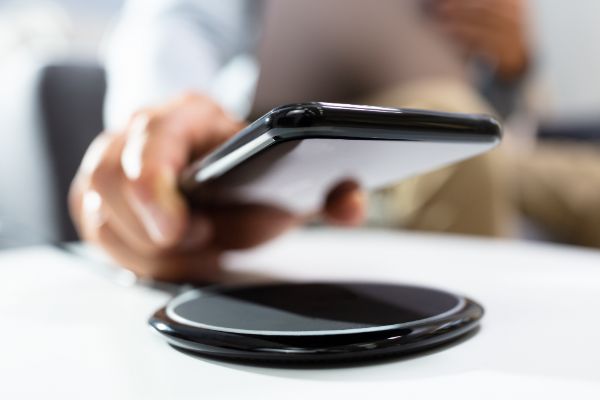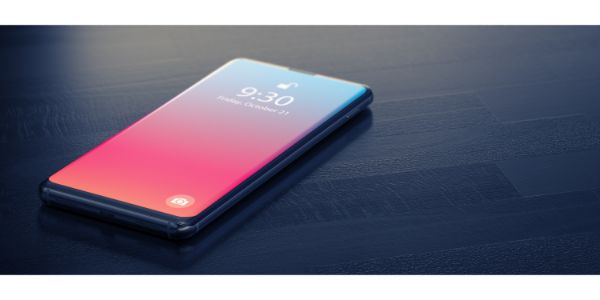Disclaimer: This post may contain affiliate links, meaning we get a small commission if you make a purchase through our links, at no cost to you. For more information, please visit our Disclaimer Page.
Charging is an essential function of all types of electronic devices we enjoy today. Anything that is portable will have a battery, and even the most efficient and long-lasting of these will need a way to charge back up at some point. The two main avenues that devices have for this purpose are wireless and wired charging, with the latter sometimes called non-wireless.
As the names might show, wired charging means that you need to connect the device with a power source to give energy to the battery. You’ll do this through a cable that connects to the appropriate port on the unit. The other end will match with a dedicated power source. For wireless charging, you can simply put the device on a surface that will start charging it once it makes contact.
In either case, many owners of technology wonder about some of the main differences between wired and wireless charging. Our article here today will try to shed some light on these contrasts. As we go along, we will talk about what might happen to your device if it is not something that is supposed to be able to handle wireless charging.
Similarly, we will mention some of the tells that you might be able to see in order to determine if your device does have features wireless charging will support. As we wrap up, we can discuss if it is possible to convert a phone that the manufacturer didn’t make for wireless charging into one that can still do it. Further, we will also touch on the speed with which this kind of charging can happen.
Table of Contents
What Happens if You Put a Non-Wireless Charging Phone on a Wireless Charger?
In short, nothing should happen if you place a phone without wireless charging powers on any kind of wireless charger. To better understand this answer, it is important to get a feel for the distinctions that exist between phones that use wired charging connections and those that do not.
Before we move further in, however, some consumers might be worried that putting their wired phones on the wireless chargers could damage the devices. Nothing, including damage, should happen to a phone that cannot charge itself wirelessly.
Part of the reason for this inactivity has to do with the architecture that exists within a wireless phone. Even the circuit boards inside the two kinds of phones will differ from one another, particularly in terms of open or closed loops that might be present.
One of the main things that a phone needs in order to allow for wireless charging is a special coil inside it. This coil interacts with the design of the wireless charging pad to take in energy that can give the battery energy without a physical connection.
Coils like the one we’re talking about simply are not present in phones that manufacturers do not design for wireless charging. Without this kind of hardware, a wireless charger does nothing for a phone that needs a wired connection.
How Do You Know If Your Phone Can Charge Wirelessly?
One of the easiest ways to see if your phone supports wireless charging is by visiting an official site that should keep records of all makes and models of devices that have the feature. Otherwise, you can always try to check with the brand or manufacturer directly to see which lines in their selections of phones will have models that you can charge this way.
Should neither of these options be available to you for some reason, you can visit online app stores to download programs that developers design in order to check for wireless charging capabilities on any device.
Although you could place the phone or other unit on a wireless charger to see if the battery starts taking on energy, there is little reason to invest in any such accessory until you know whether it can support your current device. Similarly, even if your phone does have the capability, it is quite specific and may need you to position the device in a particular way in order for the wireless charging feature to work at all.
Typically, a phone that has its own wireless charging coil needs to align itself with a similar coil inside the charging pad. To do this, a user would probably need to place the back of the phone directly on the pad, with the center part of the back cover going over the center part of the charger.
Can I Convert My Phone to Wireless Charging?
Technically, there might be a few ways to convert some phones to ones that can charge the battery wirelessly. Which method you choose may depend on the size and configuration of your phone. Before we get into it, it is important to remember that you will still need a wireless charger of some kind.
Although this may seem obvious, you may wish to purchase a charger that has a general size or shape that would seem to work the easiest with the new setup for your formerly wired phone. This way, the phone you have chosen to adapt may be able to “talk” to the wireless charger without any hassle. The size or placement of the coils in relation to the charger could make getting the accessory to recognize your phone difficult.
One of the things you can try in order to get your wired phone to a wireless charging state is to add an external adapter. For the most part, these are things that you can attach to the back panel of your phone. They include the necessary hardware to make wireless charging possible.
The coil will connect to the battery that is inside your device, and it will talk to a similar coil that resides within the wireless charging pad. You may need to ensure that the new addition to the back panel can line up properly with the pad’s coil before everything will start to give energy flow to the battery. Because phone sizes can differ, it is best to make sure that the adapter panel you buy will fit your device properly.
Alternatively, you might be able to find an internal coil that manufacturers have designed to fit inside the case of the phone. These may include secondary back panels that you might need to swap out before the coils will work.
This kind of adapter might be a good option for anyone who would like to add wireless charging capabilities to their devices without changing the external look too much. These coils should resemble charging pads themselves, but they will have a profile that is low enough to fit inside the phone.
If neither of these options appeal to you, some phone cases include architecture that designers intend as a way to charge the phones inside them wirelessly. Whatever path you might choose, there are a few options that can help you charge a wired phone wirelessly.
Just make sure that you choose a size that is appropriate for the phone model you want to convert. This is particularly true if you’re going for a phone case.
Will Your Phone Charge Faster if It’s Plugged In and on a Wireless Charger?
The answer to this question will assume that the phone in question can make use of wireless charging pads. Therefore, we are dealing with a phone that can support both of the main types of charging.
Generally, your phone won’t charge faster if it is on a wireless charging pad and also plugged in at the same time. How fast it can charge is often something that would depend on the technology and make of the phone itself.
Additionally, your phone’s battery only has a single input from which it can facilitate charging. Due to how designers make phones, wired charging tends to take priority over the wireless kind whenever the phone needs to choose between one or the other.
There are some wireless chargers that can fill up a phone battery quickly thanks to fast charging, but the energy they take is usually higher because the efficiency you’re dealing with is less than that of a wired charger. In many cases, wired charging should be more reliable and faster, but this is not a foregone conclusion.
Despite all of this, there are still some solid reasons why one might choose to use a wireless charger whenever they can. Simply placing your phone down on a pad and having it charge the battery can be very convenient. Further, charging the device using this method can keep the ports in good working condition, and you won’t have to worry about accidentally damaging ports or cables at all.
Conclusion
Non-wireless charging for phones is still a common and popular standard. However, wireless charging pads also have their place, and they can make it easier to give your phone’s battery a bit of juice when you don’t wish to concern yourself with cords.
If your phone does not support wireless charging, you may have a model that you can adapt to suit this purpose. However, trying to combine both methods will not result in faster charging, and the device will probably choose to default to the wired connection whenever it has the option to do so.


